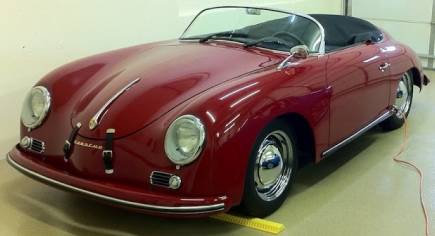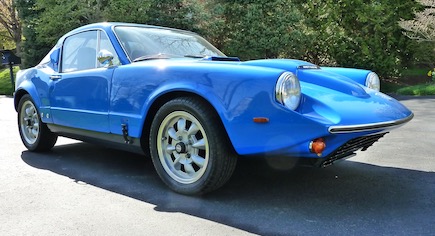Instrumentation
The electric conversion of the 1969 Saab Sonett required a completely new 12-volt system and instrumentation that could accurately measure system parameters: cumulative amp-hour use, battery pack voltage, controller temperature, RPM captured by a magnetic sensor, and other new-to-the-automotive-world data.
The original black fiberglass dashboard was retained, but re-purposed as illustrated below.

Sonett fiberglass dash with new digital instrumentation
- Headlight switch
- LED push button start
- Controller chill plate temperature gauge
- Programmable low voltage warning light
- Dimmer control for gauge backlighting
- Tachometer with RPM and amp output (see toggle switch)
- Toggle switch for tachometer display
- GPS speedometer, signal and high beam indicators
- Programmable capacity (low Ah) warning light
- Battery pack state-of-charge (Ah) gauge
- Fan switch for cabin and chill plate cooling
- Battery monitoring system (JLD404)
- Windshield washer
- Windshield wipers, two speeds
- GPS receiver for speedometer
- Push button scroll for controller monitor
- Controller monitor
- LED hazard push button
The Cars
Porsche 356 Speedster

The iconic Porsche Speedster proved to be an excellent EV conversion candidate due to its low weight, relatively simple design, and ample front/rear compartments for mounting pristmatic lithium battery cells. Weight distribution was improved over the original rear engine configuration with better acceleration and overall performance.
Saab Sonett

The unusual fiberglass Sonett, originally powered by a Ford V4 engine, combines a low center of gravity and front wheel drive, optimal for our high performance EV conversion. Without the need to accomodate a long drive train, the space behind the two seats was used for additional batteries. The original four-speed transmission remains intact along with the braking system.